|
GALERIE
LVM REPORT
|
|
|
WHY A PHASE 2? Ten years after the ETZ mods, I progressively felt the need for checking some elements and correcting their defaults. With time, the bike appears too heavy, its turning circle too wide, the engine has no torque enough, the front brake chatters, the phase 1 body restyling does not suit me totally... THE SO HEAVY FRAME… The reinforcements implemented on the phase 1 frame were not all necessary, and, as a result, weight a lot. I planned to start from another genuine frame. Here below the nacked frame, with in green color the only reinforcement that seems usefull to add. It is significantly less than on the first phase of modifications... 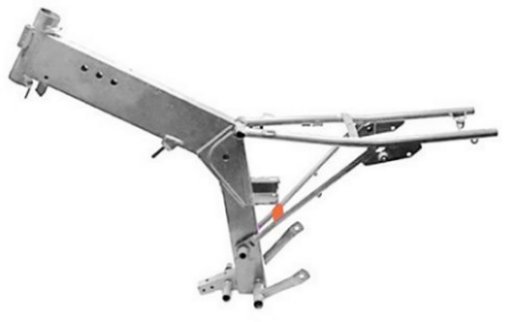
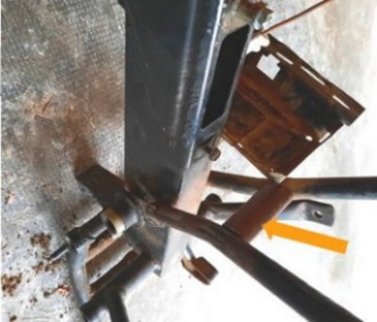
To go futher in lightening, there are two solutions for the front part of the frame: either lightening the girder, or removing it with a tubular structure within the same external dimensions: 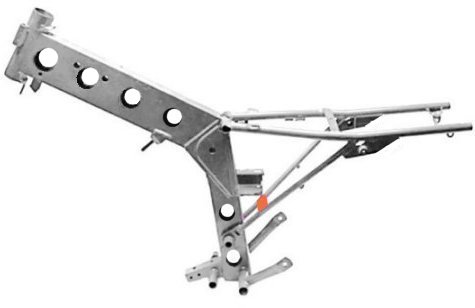
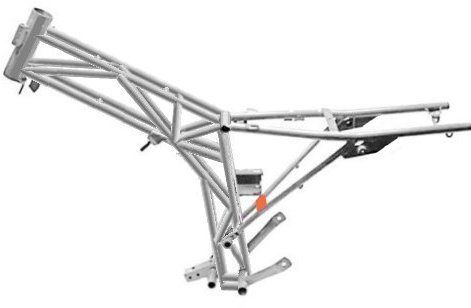
But finally, drilling the frame will be barely capable of saving 0,3 kilos while creating a tubular frame would be long and complicated. So, the decison has been made to remove the reinforcements I put on the central beam in phase 1... Here below on the right the frame with the only reinforcements kept in orange color, in comparizon with the armoured frame phase 1 reinforcements on the left: 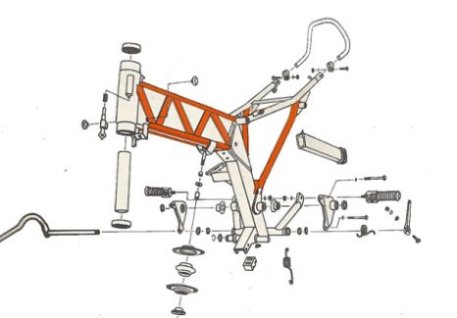
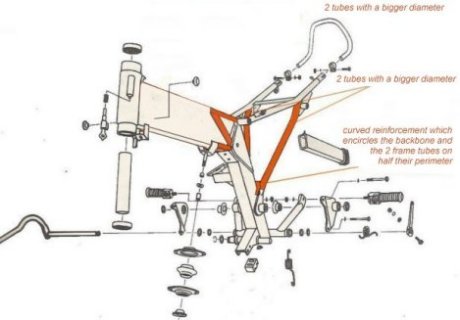
CYLINDER AND PISTON: THE QUEST OF TORQUE As mentionned here above, I've assessed some solutions in order to increase the torque. And I decided to increase the displacement from 243cc to 291cc, to lighten the new piston and especially to optimize the exhaust port (in reducing its height) and transfers (in getting them smoother)... I've ordered a Saxon 301 cylinder and piston, that is a more reliable solution than reboring, due to the width and the length of the line (once bored, it doesn't exceed the cylinder any more, see the spigot to be kept on 3rd picture here below). Here is the Saxon 301 cylinder (unfortunately black, to be sand): 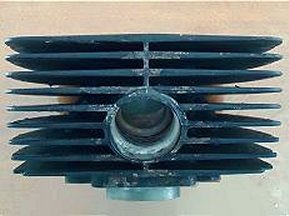
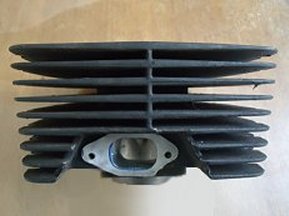
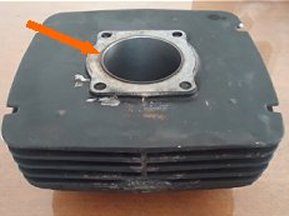
In the following images, the genuine piston before lightening (342g), and after lightening (333g): 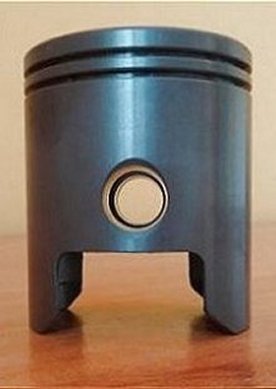
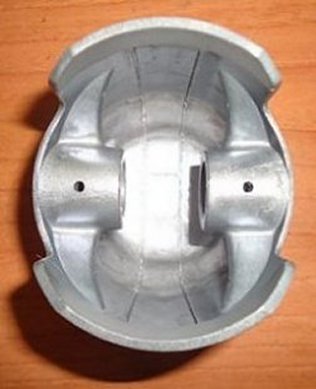
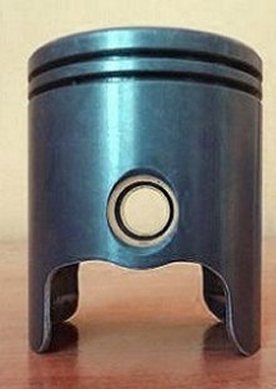
And its axle (80g single-handedly) that is lightened by the mean of an internal chamfer (in red color) without impairing its strength (64g): 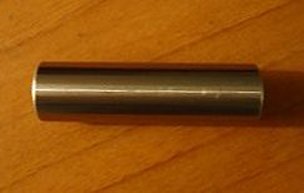
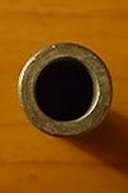
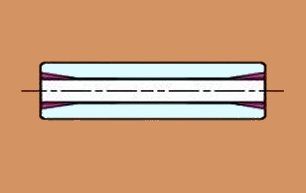
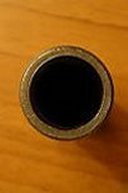
Piston and its axle have consequently lost 9g+16g=25g sum total. Here below, the genuine transfers, with a crankshaft exit a little bit chaotic and rough shapes, and after modifications, with a significant increase of gaz section at the very begining of the double transfers only by removing the thicknesses between them, in order to avoid a too sudden bottleneck and to favour gaz speed acceleration: 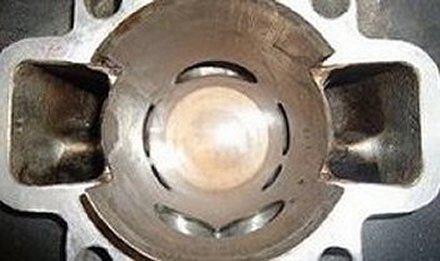
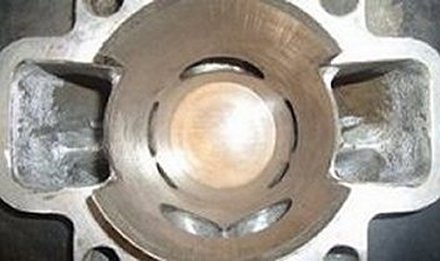
On the following pictures, you can see the unexpected gap between the inlet port (in blue color, the gap on the cylinder side, and in red the opposite gap on the pipe side) before rectification and after: 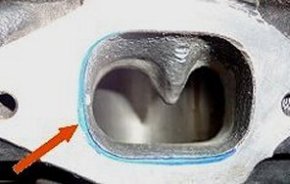
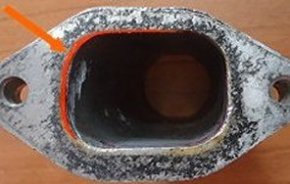
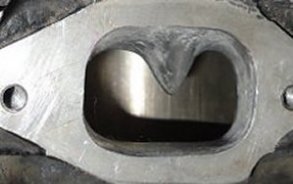
And nothing is more gorgeous than a perfectly regular and straight intake port... Gas will enjoy: 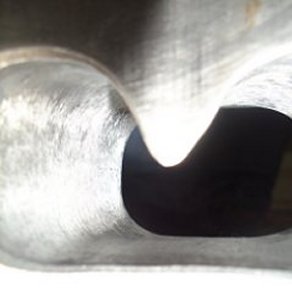
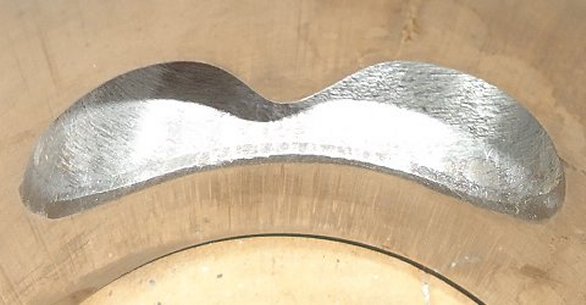
At last, the exhaust port, with a modifications that obviously consists in adding metal on the top of the duct, on piston side (see the upper arrow here below)(1mm more on the top of the port represents about 10° exhaust timing less, that brings the ETZ back to the timing level of the ETS, which has more torque): 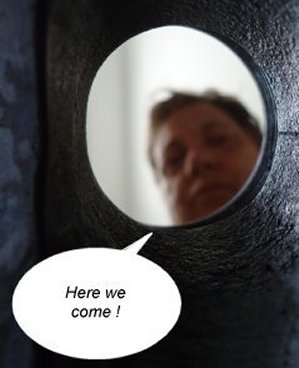
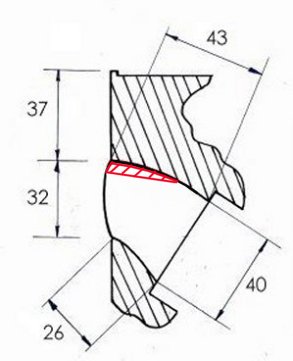
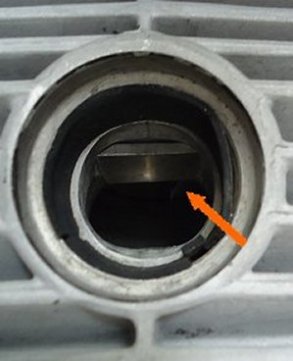
Given it is not possible to add metal by welding so close the line (at risk of damaging it), the only way consists in fixing an aluminum part by welding it on the exhaust pipe side. In red here above the part to fix in order to reduce the exhaust timing and, and in the following pictures, the aluminium part during adjustement process (by the way, have a glance to the differences on the fins brightness once the cylinder was sandblasted). The last picture below is a view from inside, once the shim welded: 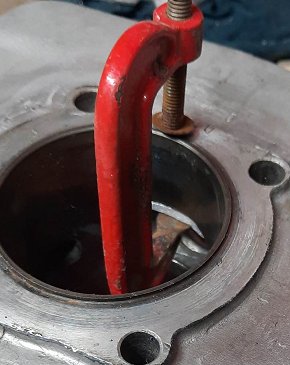
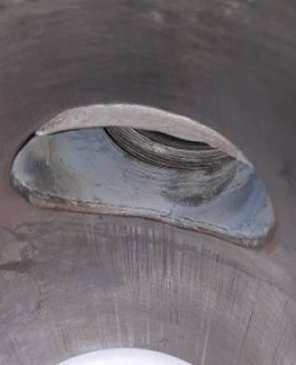
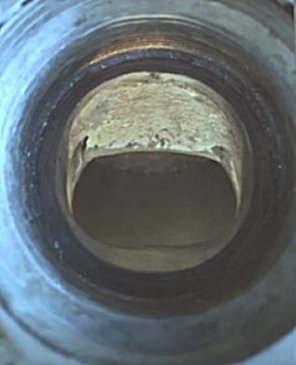
The 301 exhaust timing is much more in favor of torque, because reduced in comparizon with the 250 ETZ one (180°), although significantly bigger than the very torquey 250 TS (170°). Unfortunately, the exhaust timing measured once the new 291cc piston mounted with its cylinder is not the expected 178° but about 189°! Consequently, the aluminium shim is well and truly needed to come back to an approximately 170° value. With the 4mm wide shim, the measured exhaust timing is exactly 173°. 
In addition, given it requires to machining the 250 head cylinder in order to fit it to the wider 301 cylinder and its higher piston, it becomes clearly unvavoidable to determine the compression rate and the height of the squish: 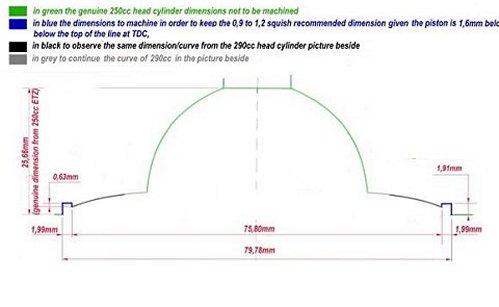
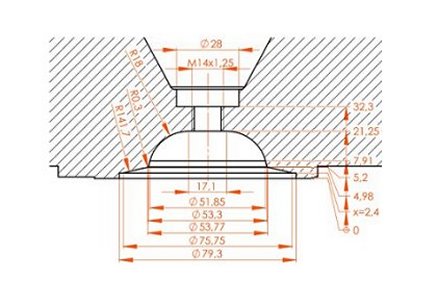
Here is the headcylinder freshly machined according to the new displacement metrics. Unfortunately, during the test, the engine is very torquey at low speed but sounds like a diesel. After dismounting and controlling with a seringe, the compression rate appears too high, probably about 18 to 1, and the squish is measured at only 0,6 to 0,7mm. As a result, the head cylinder has been machined again in order to exend the compression chamber volume. On the second picture, its new metrics for a theoretical compression rate approximately between 9 to 10 to 1, and a squish about 1 to 1,1mm by the mean of a 0,8mm gasket. But the engine is still clinking and the kickbacks remain, simply because the exhaust port is closed earlier and generates a higher gaz compression (detail which is not taken into account by the mathematic compression rate formula, whence the usefull formula as it is used in Japan!)... As a result, a new machining of the headcylinder with, on the third picture and the drawing, dimensions that bring at last the noise at a more normal level and totally cancel the kickbaks, while keeping a torque like an enduro bike: 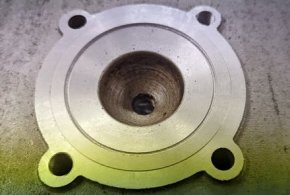
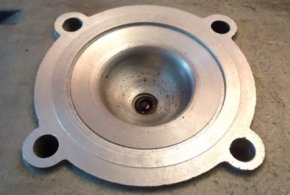
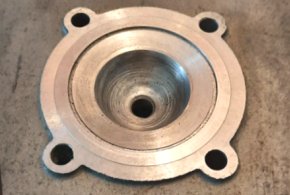
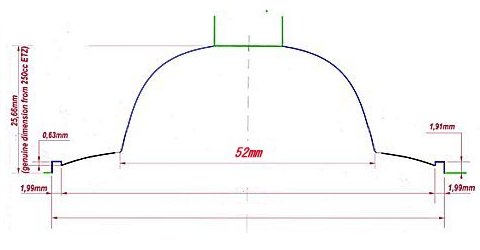
Diminishing the ignition advance at low rpm enables to decrease a little bit more the spark knock noises, that noises which remind how much the head cylinder is challenged in comparizon with the genuine setup. By way of testing, the advance curve, which was optimized on the 250cc in phase 1, is significantly softened (with a top at 23 degrees instead of 28, as shown on the following pictures). It enables a more smooth functionning at idle and at cruise speed. Nonetheless, some mecanic noises remain at low rpm, which don't even vanish with 15 degrees of advance (7 points less than the genuine curve). Such noises seem due to engine vibrations (no damper rubber between the fins, less metal around the combustion chamber, higher compression). Other phenomenoms remain, during deceleration, mainly in 5th and 4th gears, of engine hiccupping because of crankshaft and clutch weight reduction (versus the 293cc piston which is significantly heavier than the 250cc one) and detonation caused by the huge compression. It is funny to see that these detonation noises vanish with gaz additive which increase the octane rate! Here below, in green color, the reminder of the genuine fixed advance compared to the previous and the new curves: 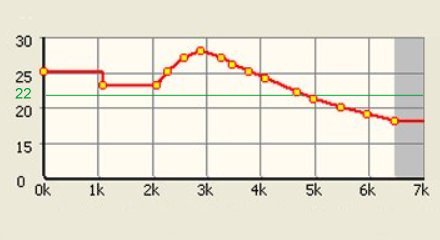
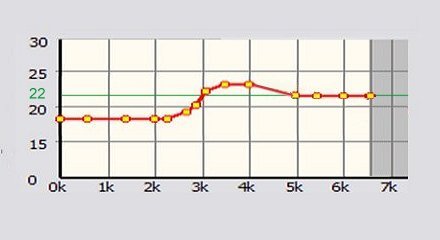
Still relating to the torque, a air intake in a conical pipe is expected to be beneficial. Nevertheless, the long rubber duct that brings the fresh air to the carburator is cylindric, with its entrance even a little bit narrower than on the carburator side. Transforming a rubber part is very difficult. Anyway, by dint of warming it on a much bigger cone, it got a slightly conical shape. Of course, it is not a steep angle, by far, but at least, that is something: 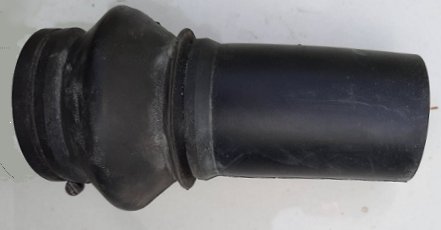
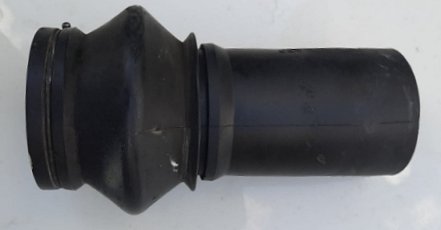 THAT'S WELL AND GOOD BUT WHAT SAYS THE DYNAMOMETER? Numbers, numbers! That's what really matters... 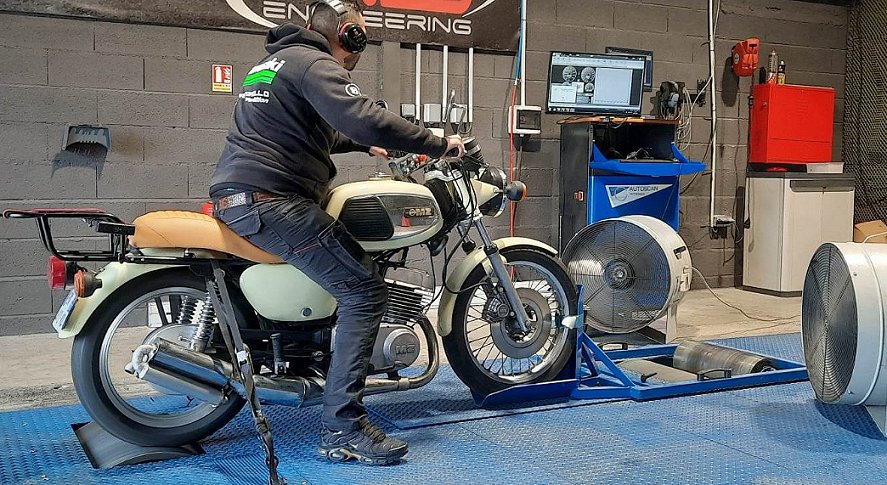
The goal, which was to improve the torque and the accelerations, is reached: the rev of maxi torque is considerably reduced while the torque itself surges to 32 Nm, that is to say much more than the genuine 250 MZ ETZ and the 301 MZ. The output was not the target and there was the risk that diminishing the exhaust timing damages the high rev. Despite that, the engine gains more than 2hp versus the original version, and more than 1hp in comparizon with the 301. Here below the table of comparizons beetween the different models: 
The availability gains of the engine are more revealing on the curves, where we can see that the one of the power as the other of the torque have been significantly enlarged, at low rpm as at very high rev. As a result, the motorbike delivers more than 20 hp beetween 4400 rpm and 6250 rpm, which means a 1850 rpm range (against an initial 900 rpm range). It delivers more thant 18 hp beetween 4100 rpm and 6260 rpmn, that is to say a 2150 rpm range (versus a 1400 rpm range at the origin). The torque curve is as much as demonstrative, with a torque above the genuine 2,74 Nm maxi, that on an over 1725 rpmn range (beetween 3875 rpm and 5660 rpm). In conclusion, there is a over 2000 rpm range of maxi torque which has been acquired. Here below in colored zones the gains (in green the gains in torque, in red the gains in power): 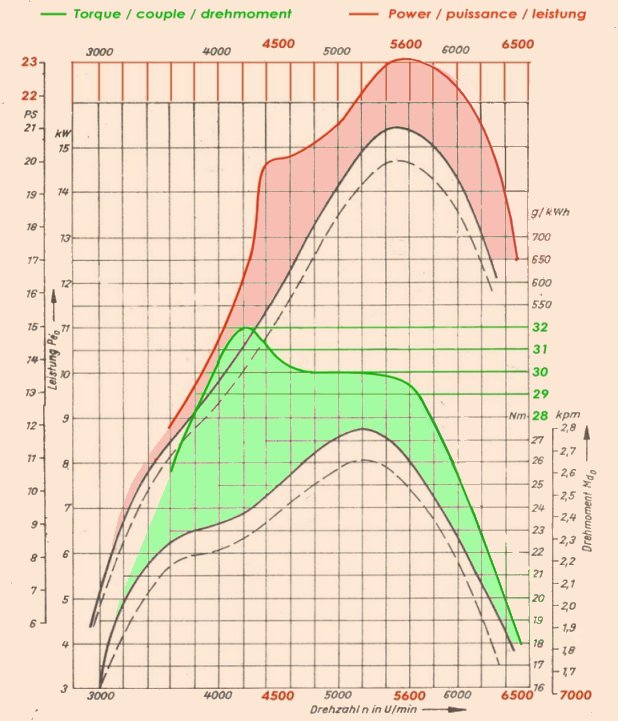
NOW, THE BODY AND THE STYLE… The front wheel rim is beneficially replaced by a rear one, wider. At the same time, the turning cycle is reduced by more than 5° on each side and the brake disk surface is rectified: 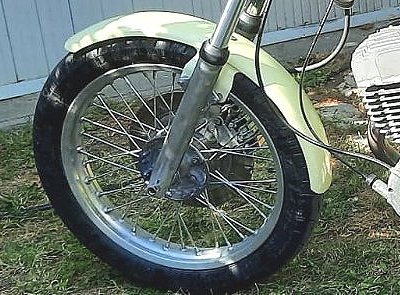
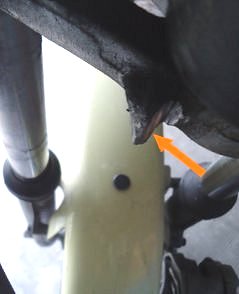
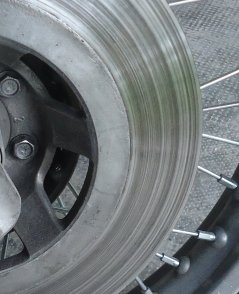
Unfortunately, after running the bike, the disk remains buckled despite. So, it has been measured on a perfectly plane table in order to assess the buckling dimensions. Given the disk is too narrow to be machined on a lathe, the rectification has been done on its base (where the disk is fixed), in proportion of its position regarding the rotation axis. Here below the numerous measurements (+0,25mm buckling) and it base once rectified (in proportion of its distance from the rotation axis). Nevertheless, on the road, the improvment is not complete. Because of that, the disk is replaced by a nearly new one (thickness >5mm), found at last on eBay after a long searsh, disk which needed to be repainted (off with the black color!): 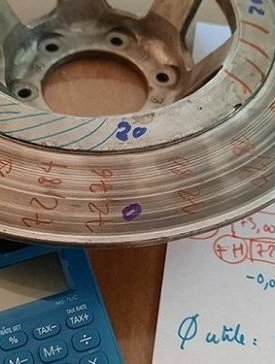
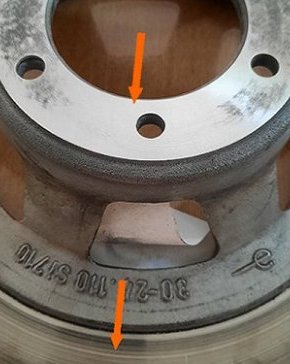
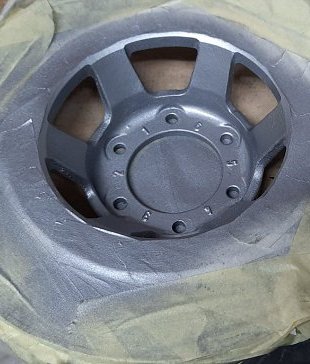
Genuine lateral housings have been curved at phase 1 but not sufficiently. The target now is to put them in perfect compliance with the style of the so friendly gas tank. First step, polyrethane cast and mastic. Then fiber glas in order to get smooth shapes and less weight: 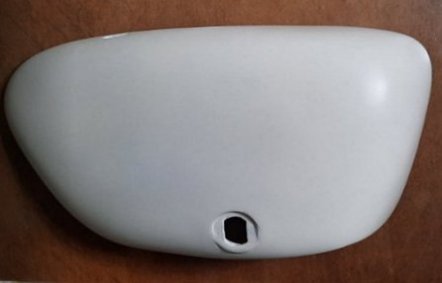
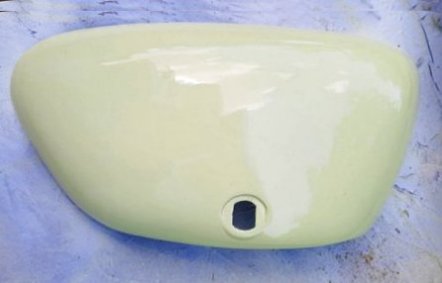
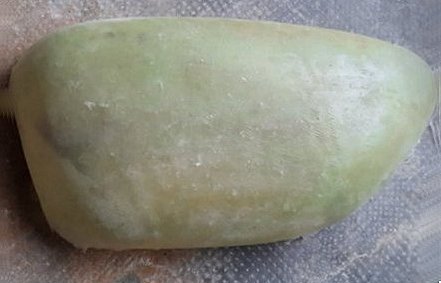
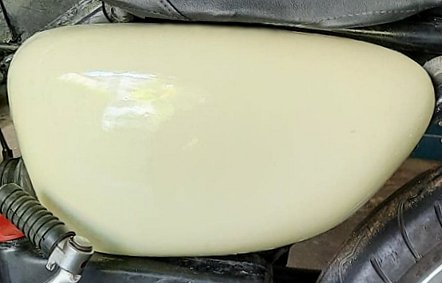
Here it is for the right side: 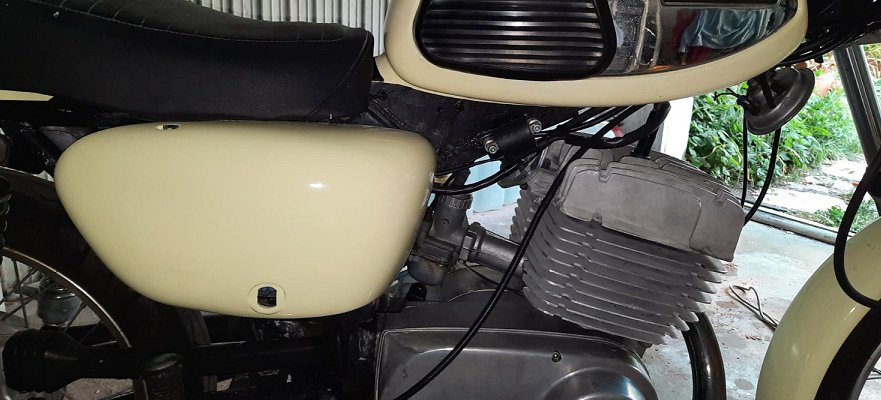
And for the left side, much more tricky because of the air box and the carburator: 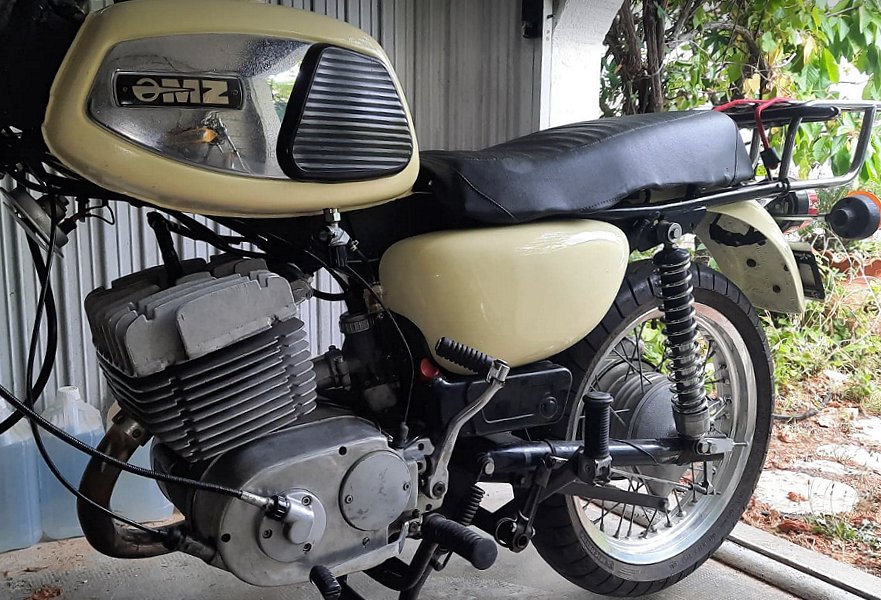
In addition, with time, it occured that the new fiber glass air box was much more noisy than the aluminium made genuine one. Hence the need to spray inside liquid rubber, then to stick an aliminium sheet, as an intake silencer: 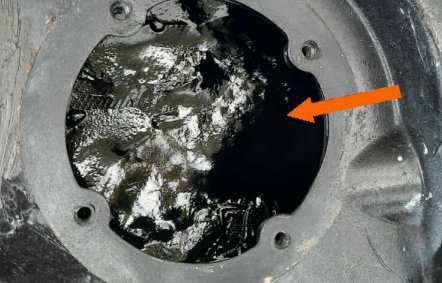
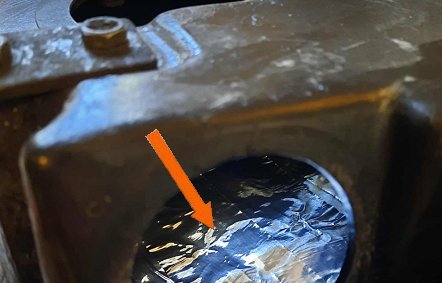
The rear mudguard which was clearly improved at phase 1 in comparizon with the genuine one, get arched on its back side, like the gorgeous fuel tank: 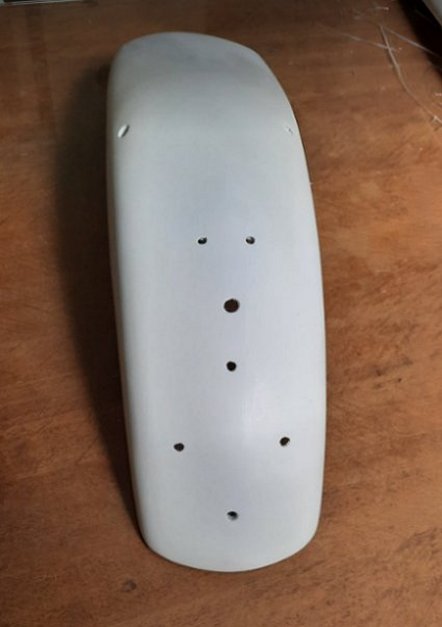
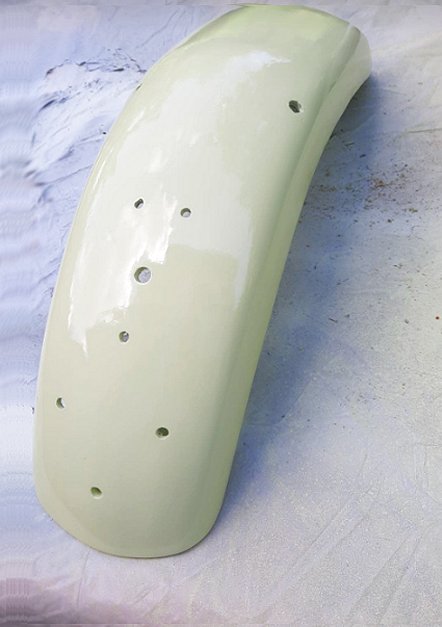
To hell with the time to spend, the tank is sandpapered and re-painted for a better shine: 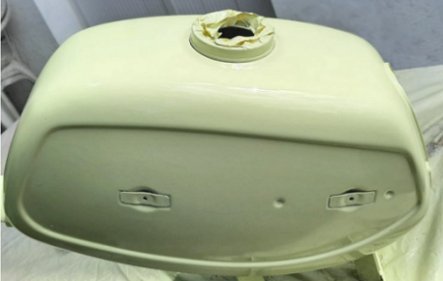
As for the engine, its shapes are softened, with curved fins and a narrower cylinder base. So far away from the genuine awfully cubic engine and its horizontal fins up to the spark plug... A little bit closer to the so splendid Garelli Tiger cross 50cc engine of the 70s. And by the mean of rubber resistent bushings, the vibrations noise of the engine decreases slightly: 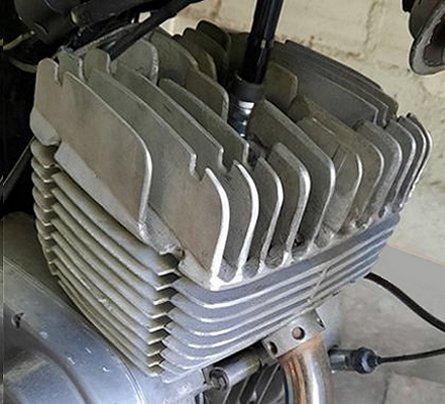
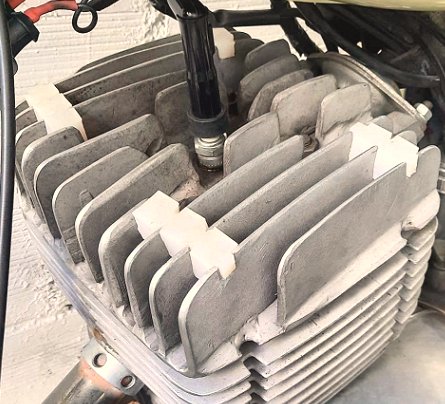
The seat was already reshaped in phase 1 with its two levels in order to stick on the rear wheel curve. But here it is in fiber glas on its cast, for a much bigger clearance on the rear mudguard and a reduced weight: 
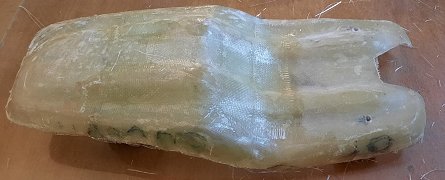
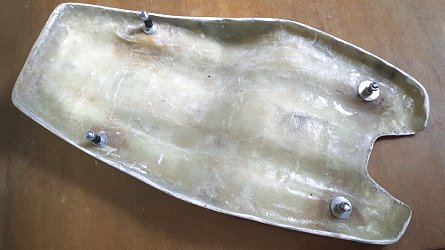
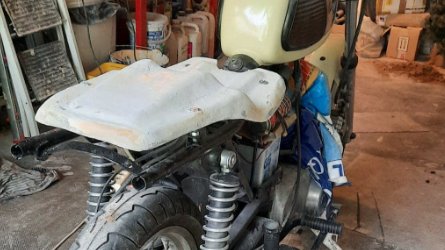
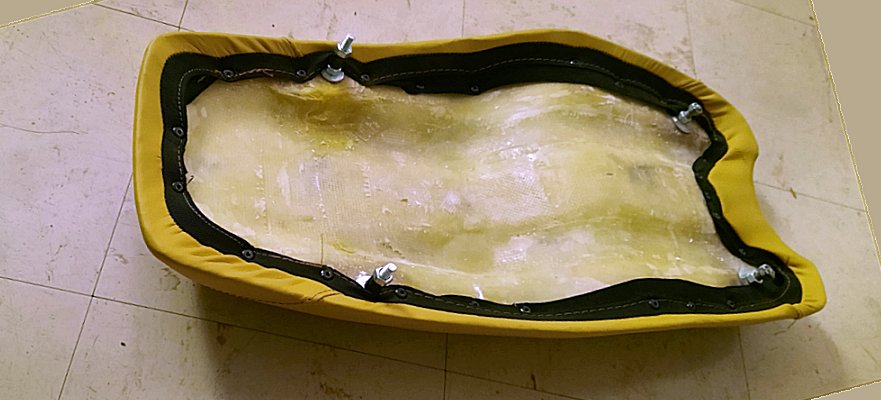
With such a final result, thanks to a awesome vegetal leather: 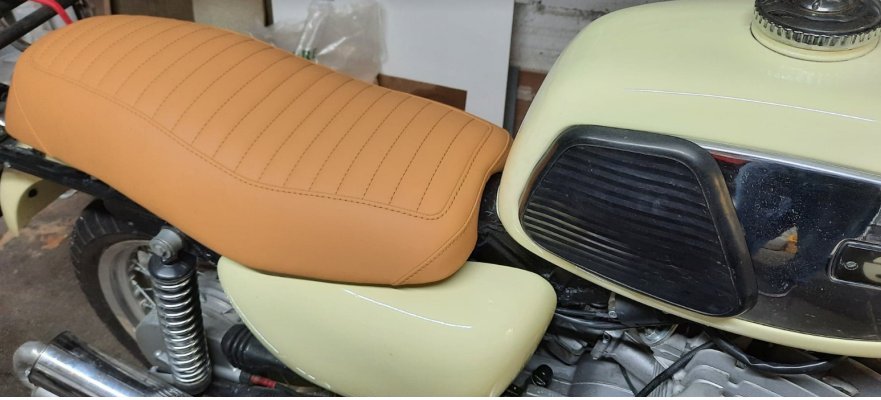
And here is the motorbike in its last configuration: 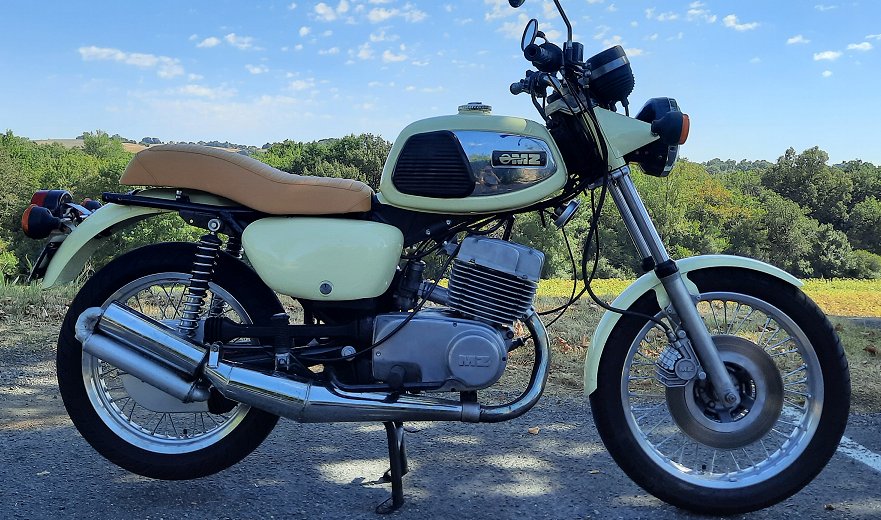
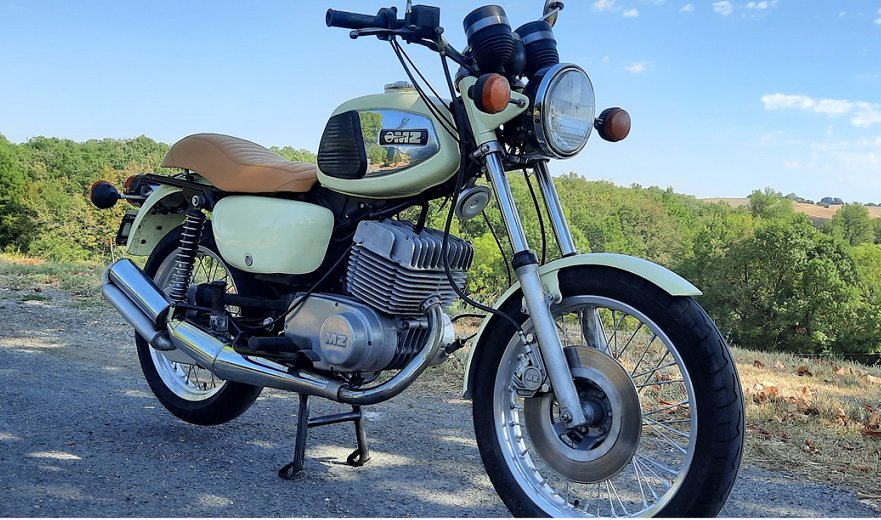
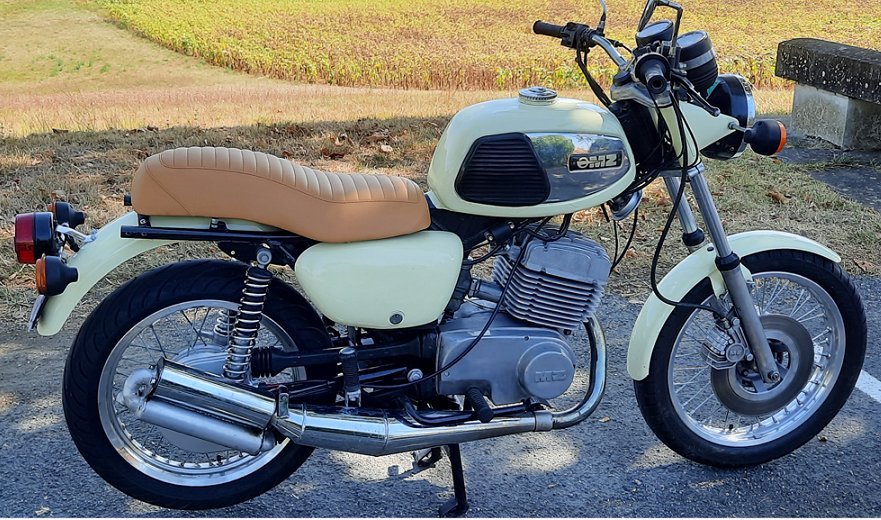
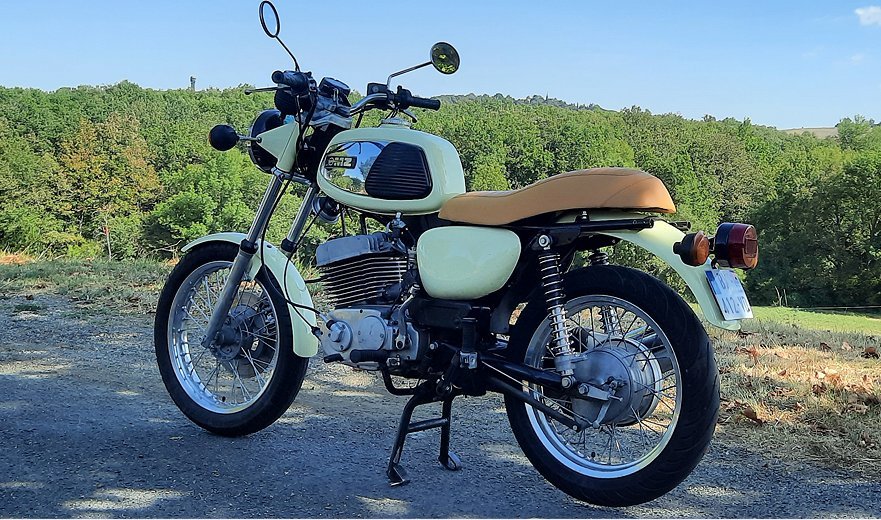
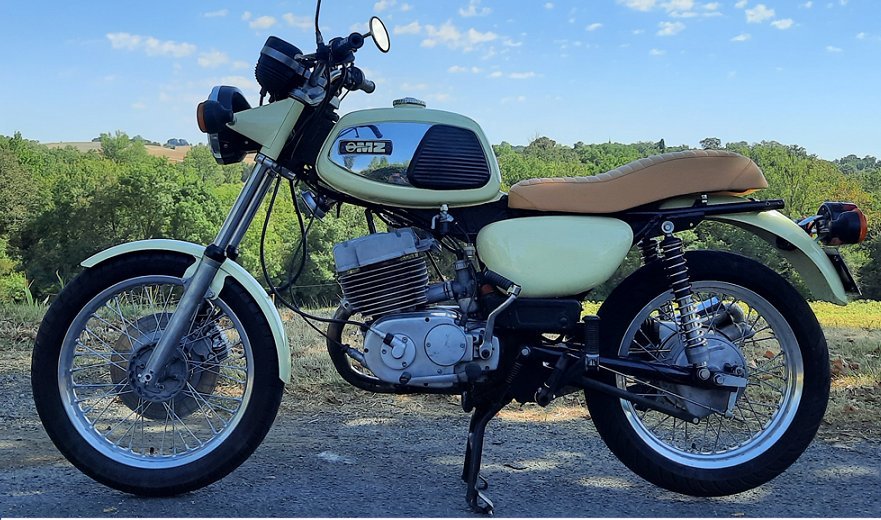
With its rack whith its black powder coat: 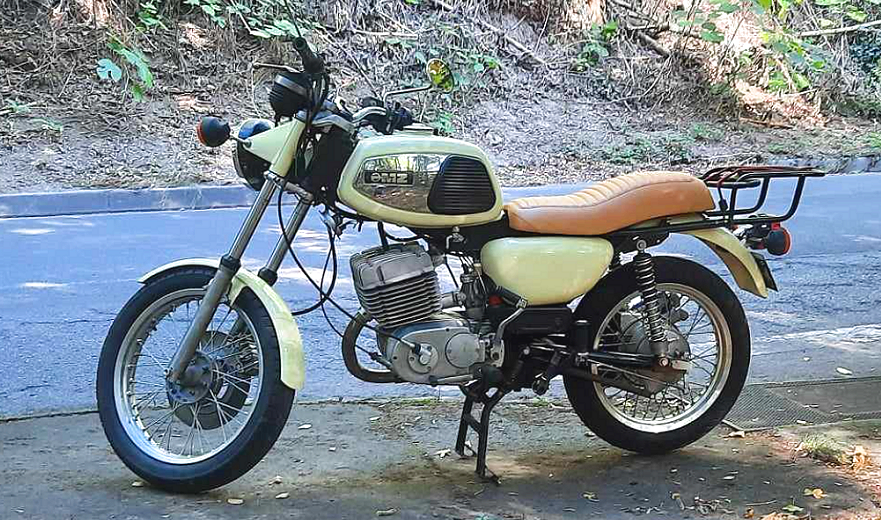
|
|
| Restoration Ducati SCR 250 G-Purp STR 350 ItalScrambler Triumph Bonneville PUCH SGS MZ 125 TS BMW R26 Scooter STR |